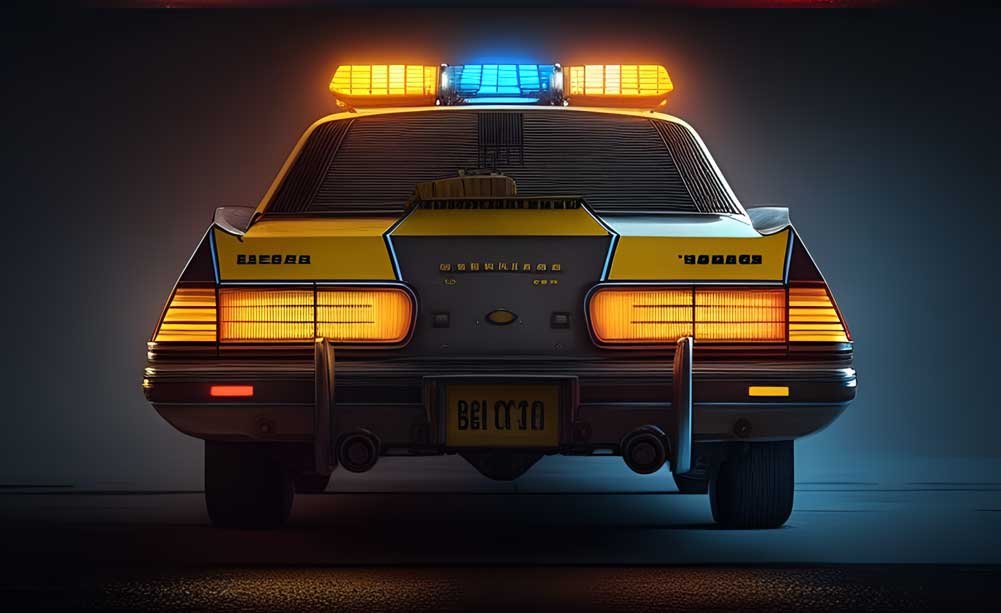What Do Yellow Lights Mean on a Police Car?
Police cars are a ubiquitous sight on roads worldwide, and their presence often brings a sense of order and safety to motorists. The vehicles are equipped with an array of colored lights, which are used to communicate different messages to the public.
Yellow lights, in particular, can be quite intriguing for those who may not know their purpose.
In this article, we will delve into the meaning behind yellow lights on police cars, their significance, and how they affect drivers and other road users.
Short answer:
Yellow lights on a police car have multiple uses including:
Caution - serves as a cautionary signal, warning motorists and pedestrians to be aware of potential hazards.
Traffic Control - use yellow lights when directing traffic, especially during incidents that do not necessarily require the use of red or blue emergency lights.
Visibility - helps increase the visibility of police vehicles and officers during low-light situations, such as at night or in fog.
Slow-Moving Vehicle - alerts motorists that they are moving at slower speeds than normal traffic when conducting a search, surveying an area, or escorting a vehicle or group of people.
-
The different lights on a police car are used to communicate various messages to drivers and pedestrians on the road. The specific meanings of the lights can vary depending on the jurisdiction, but generally, they are used as follows:
Red and blue: These lights are typically used to indicate that a police officer is trying to pull over a vehicle. They may also be used to warn drivers of a hazard or to indicate that an emergency vehicle is approaching.
Red flashing lights: These lights are typically used to indicate that an emergency vehicle, such as an ambulance or fire truck, is approaching.
Blue flashing lights: These lights are typically used to indicate that a police officer is present and may be enforcing traffic laws.
White flashing lights: These lights are typically used to illuminate the area around the police car or to provide additional warning to drivers.
-
A car with a yellow light on top could be a few different things depending on the context.
In some cases, it may be a taxi or ride-sharing service.
In other cases, it may be a slow-moving or oversized vehicle, such as a construction vehicle or a wide load.
-
Blue lights on a police car typically indicate the presence of law enforcement and may be used to warn drivers of a potential traffic stop or to enforce traffic laws. In some cases, blue lights may also be used in conjunction with red lights to indicate an emergency situation.
Yellow lights on a police car are less common and may be used for a variety of purposes, depending on the jurisdiction. In some cases, they may be used to indicate a slower speed, as when a police car is leading a funeral procession or escorting a parade. They may also be used to indicate caution or to warn drivers of a potential hazard on the road.
-
Orange lights on a police car can have different meanings depending on the jurisdiction and the situation.
However, in general, orange lights are often used to indicate caution or to warn drivers of a potential hazard.
They may be used in a variety of situations, such as when an officer is directing traffic, when there is road work or construction ahead, or when there is a disabled vehicle on the side of the road.
In some cases, orange lights may also be used in conjunction with other colors, such as blue or red, to indicate an emergency situation.
For example, in some jurisdictions, an officer may use both blue and orange lights to indicate that there is a slow-moving or wide load on the road.
Related Questions
Police Car Light Patterns and Meanings
Before we discuss the specific meaning of yellow lights, it's essential to understand the various types of lights commonly used on police cars. Generally, there are three primary colors of lights used in law enforcement vehicles: red, blue, and yellow/amber.
Red and Blue Lights
Red and blue lights are the most recognizable on a police car, and they are used to indicate an emergency situation or the presence of law enforcement. When these lights are flashing, it signals that the police are on a call, responding to an incident, or conducting a traffic stop.
Drivers are required to yield the right-of-way, move over, or stop, depending on the situation and their jurisdiction's laws.
Yellow/Amber Lights
Yellow lights, also referred to as amber lights, have a distinct meaning from red and blue lights. They are typically used to convey a non-emergency message or warning to drivers and other road users.
Meaning of Yellow Lights on a Police Car
The primary purpose of yellow lights on police cars is to promote safety and enhance communication between law enforcement officers and the public. Some of the common uses of yellow lights include:
Caution
Yellow lights serve as a cautionary signal, warning motorists and pedestrians to be aware of potential hazards. For example, if a police car is parked on the side of the road, the yellow lights may be used to indicate that there is an obstruction, such as debris or a disabled vehicle, ahead.
Traffic Control
Law enforcement officers often use yellow lights when directing traffic, especially during incidents that do not necessarily require the use of red or blue emergency lights. The yellow lights can guide drivers through congested areas, around accidents, or during special events where traffic management is necessary.
Visibility
Visibility is crucial for police officers working in different weather conditions or during low-light situations, such as at night or in fog. Yellow lights help increase the visibility of police vehicles and officers, making it easier for drivers to see them and respond accordingly. This improved visibility helps prevent accidents and enhances overall safety.
Slow Moving Vehicle
In some cases, police cars may use yellow lights when they are operating at lower speeds than normal traffic. This could be due to a wide variety of reasons, such as conducting a search, surveying an area, or escorting a vehicle or group of people. The yellow lights inform other road users that the police car is moving slowly and that they should exercise caution when approaching or overtaking.
How to Respond to Yellow Lights
When encountering a police car with yellow lights flashing, drivers should follow these steps:
Be Alert
Pay close attention to the road and the police car's actions. Look for any signs indicating that you should change your driving behavior or follow specific instructions from the officer.
Slow Down
Yellow lights typically signal that there is a potential hazard, so reducing your speed is a prudent response. Slowing down will give you more time to react to any changes in traffic patterns or unexpected obstacles.
Follow Instructions
If a police officer is directing traffic or providing instructions, follow their guidance. They are trained professionals who understand how to maintain safety in various situations.
Give Space
If a police car is parked on the side of the road with yellow lights flashing, it is essential to give them ample space. This allows the officers to work safely and ensures you do not inadvertently become involved in an incident. Depending on your jurisdiction, you may be required to change lanes or move over when passing a parked police car with flashing yellow lights.
Do Not Panic
Yellow lights are not meant to cause alarm but to promote safety and awareness. Remain calm and focused while driving, and be prepared to react to any changes in road conditions or traffic patterns.
Be Patient
When encountering a police car with yellow lights flashing, it is important to exercise patience. Officers may be working to resolve an issue or managing traffic flow, and your cooperation can help maintain a safe environment for everyone.
Differences in Jurisdictions
It is essential to note that the meaning and use of yellow lights on police cars can vary depending on the jurisdiction.
Some countries or states may have specific regulations governing the use of yellow lights on emergency vehicles, while others may use different colors or combinations to convey similar messages.
Always familiarize yourself with local laws and practices to ensure that you understand how to respond appropriately to police cars with yellow lights in your area.
In some jurisdictions, other emergency vehicles such as fire trucks, ambulances, and tow trucks may also utilize yellow or amber lights to indicate their presence and purpose on the road. Understanding the meaning behind these lights and responding accordingly is vital to promoting safety and efficiency in emergency situations.
Conclusion
Yellow lights on police cars play a crucial role in maintaining safety on the roads by conveying non-emergency messages and warnings to drivers and pedestrians.
While the specific meaning of yellow lights can vary depending on the situation and jurisdiction, they generally serve as a cautionary signal, aid in traffic control, enhance visibility, and indicate slow-moving vehicles.
When encountering a police car with yellow lights flashing, it is essential to remain alert, slow down, follow instructions, give space, and exercise patience.
By understanding the meaning behind these lights and responding appropriately, we can contribute to a safer driving environment for all.












Inside the Investigation: A Deeper Dive into Police Detective Benefits